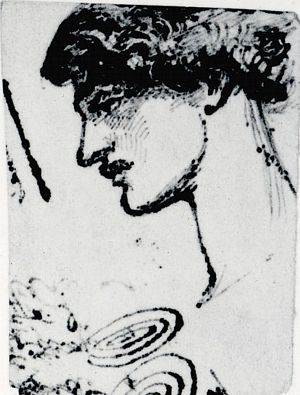Locked in, locked out.

The first time I went to Oxford, back in 1996, I was stunned by how excluded I felt. (I know now that it was a sign of my incredible privilege that that was perhaps my first experience of feeling utterly locked out.) Here, all over town, little doors open up vistas into the most beautiful courtyards and gardens and quads and cloisters you can imagine, even more beautiful than Oxford's. And little signs just inside the doors tell you "No Entry. College Closed to Visitors." I feel less excluded this time, simply because one of these colleges is my own, and once I have a university ID card, more of them may be open to me. And by virtue of my research, Newnham College--the one with these patinaed gates--will (I hope) be open to me, at least within reasonable bounds, within a few weeks.
"I was so glad to register with the surgery," my neighbor-friend told me the other day, "because I'd only seen Newnham from the main road before, and from there, it's fairly unremarkable. But from Newnham Walk, it looks like heaven in there." I verified this the next day when I trotted down to the same surgery and registered myself with the National Health Service.
Newnham is important because it was the second Cambridge college founded for women, back in the 1870s, and it was the first one to be founded near the men's colleges. I stood and stared at the gates for a long time the other day, wondering whether they are, in fact, the same gates that were pulled down by male undergrads and alums on the second occasion (in the early 1920s) when there was a vote about whether or not to allow women to take degrees from Cambridge in addition to pursuing courses of study. Though the women (who weren't able to vote at all, not being Cambridge alums) were not granted the right to take degrees during that election, Cambridge men stormed the gates anyhow. In the 1890s, the first time the women weren't granted that privilege, the college was somehow able to protect its property, but the passage of 30 years had apparently emboldened the next generations of voters. (When the vote came up a third time, in the 1940s, women were granted the right to sit exams and earn degrees with no trouble at all. Go figure.)
I love the prevalence of sunflowers on the gates. Sunflowers were an incredibly important symbol in the American suffrage movement because Kansas passed a state referendum in 1867 to allow women to vote, and the Kansas state symbol was the sunflower. I don't know whether or not that's why these sunflowers are here, but I suspect it may well be.
When I stroll out into town, past the colleges with their open-but-closed gates and the hordes of people whizzing by knowingly on their bicycles (all with the most enormous bicycle baskets you can imagine), I've come to put a certain look on my face, a half-smile and a twinkle that belie any sense I might have of not completely belonging here. Cambridge was half the place that led Virginia Woolf to wonder, in A Room of One's Own (which she delivered here, at Newnham and Girton), whether it's worse to be locked in or locked out. I figure that I'm in the best of both worlds right about now. And will be even more so within a few months.


0 Comments:
Post a Comment
<< Home